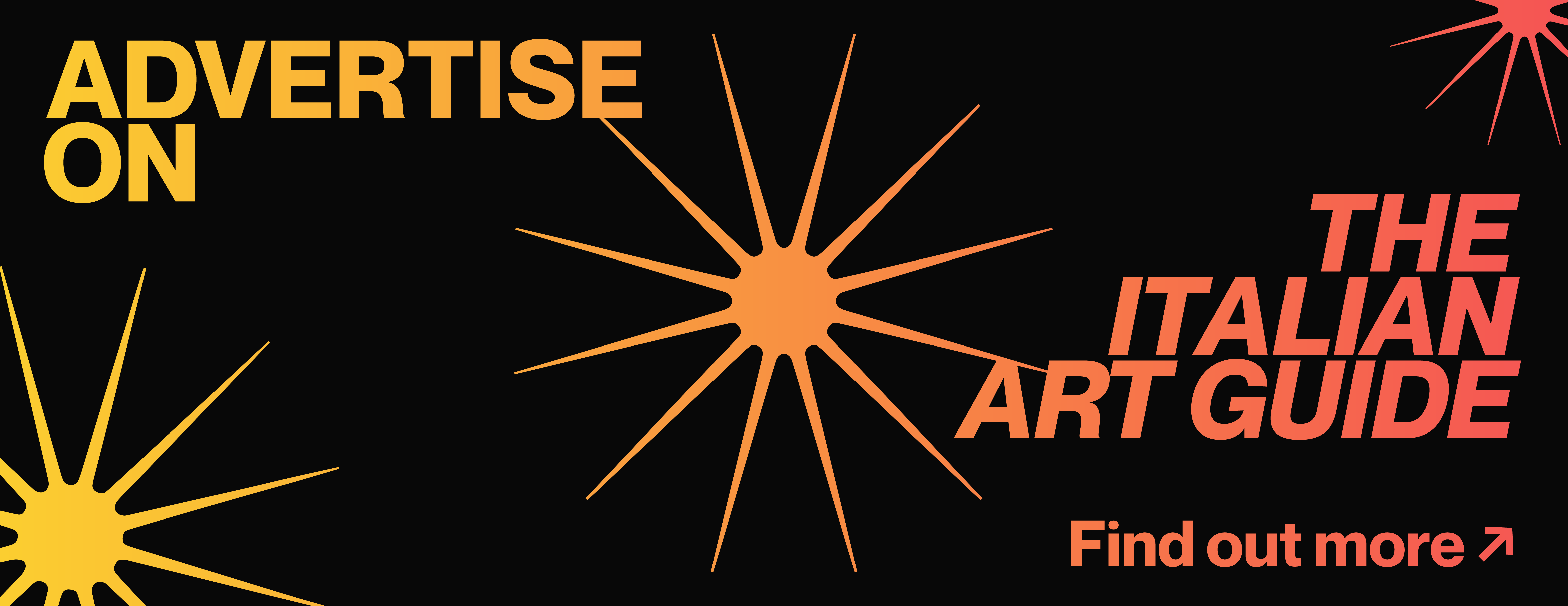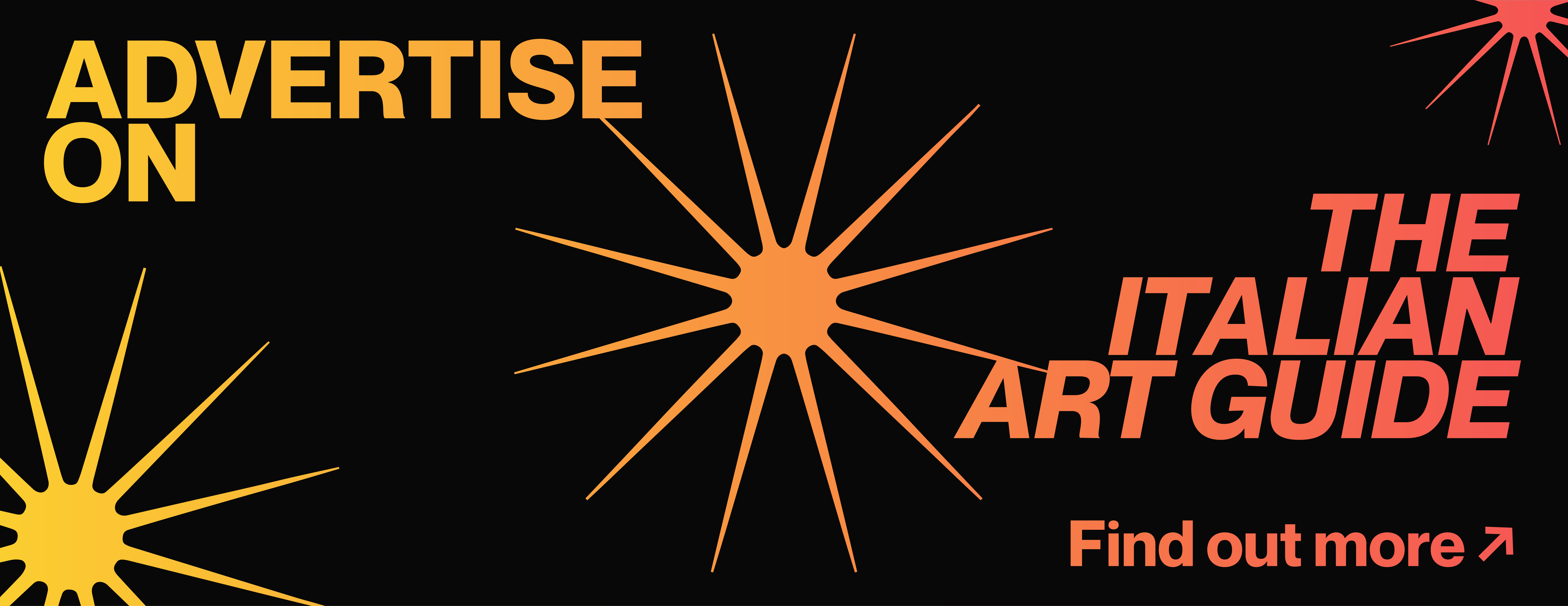Storm: Towards “A New Shape of a Theoretically Already Known Thing.”
Denis Maksimov in conversation with Paweł Sakowicz
Clicca qui per leggere questo articolo in italiano
Paweł Sakowicz’s choreography and dance exemplify the language of the body. His new work, Storm, is presented in Memories of Water, Memories of Art, convened and curated by the founder of Arts Territory, Kasia Sobucka, in the baroque splendour of the Palazzo Contarini Polignac in Venice on June 27 and 28. Taking the cue from the amalgamating state of permacrisis we are all in, the programme reflects on the idea of an “unaltered environment — examining what has been lost, what may still be reclaimed.” Sakowicz’s corporeal artistic practice touches upon the sincerity of physical gestures. In a world oversaturated with inauthentic imagery and a rhetorical logographic mode of making meaning through the bombardment of instantly generated prompts and media, can performative play assume the role of a raw and honest take on reality?

Denis: What was the initial spark or inspiration behind Storm? How did you conceptualise the interplay between desire, self-reflection, and the body in this work?
Paweł: The invitation came from Edgaras Gerasimovičius and Post Brothers, the curators of the exhibition at the Sapieha Palace in Vilnius. They suggested that I work on a solo piece that would dialogue with the theme of the exhibition, which considers the status of the body within the history of animation. I wondered how to build a movement performance that doesn’t have to, like animation, build the illusion of movement because the whole thing is movement, after all.
However, I was interested in the animation technique of “breaking the joints,” which assumes that you have to emphasise or crook a certain movement to make it look natural. From there, I was led towards the hips — one of my favourite areas of the human body. I practised ballroom dancing for a decade as a teenager, spending hours every day perfecting hip work, its rotation and motor skills. Culturally, the hips are a symbol of vitality, sexuality and enticement — this was an exciting area to investigate.
D: The performance is described as “centring on the body as a site of seduction.” What does seduction mean to you in the context of choreography and performance?
P: Seduction is inherent in the stage situation. It is one possible strategy for establishing a relationship or pact with the audience. For me, the body can seduce in different ways: it can draw on a reservoir of dance styles that overtly connect with a topic of desire, such as social or erotic dances. However, what is most telling about desire is the eyes: who looks and how they look, when the performer rejects the gaze, when the audience’s glance is timid. In the case of Storm, I don’t make eye contact with the audience but look inwards. I am seducing my body myself, reminding myself how it works and what images it can produce. I seduce my hips, which rotate, shake, and freeze at the right or deliberately inappropriate moment. I speculate what lines and body positions might be associated with eroticism in the art of animation, but also in the Golden Hollywood era.
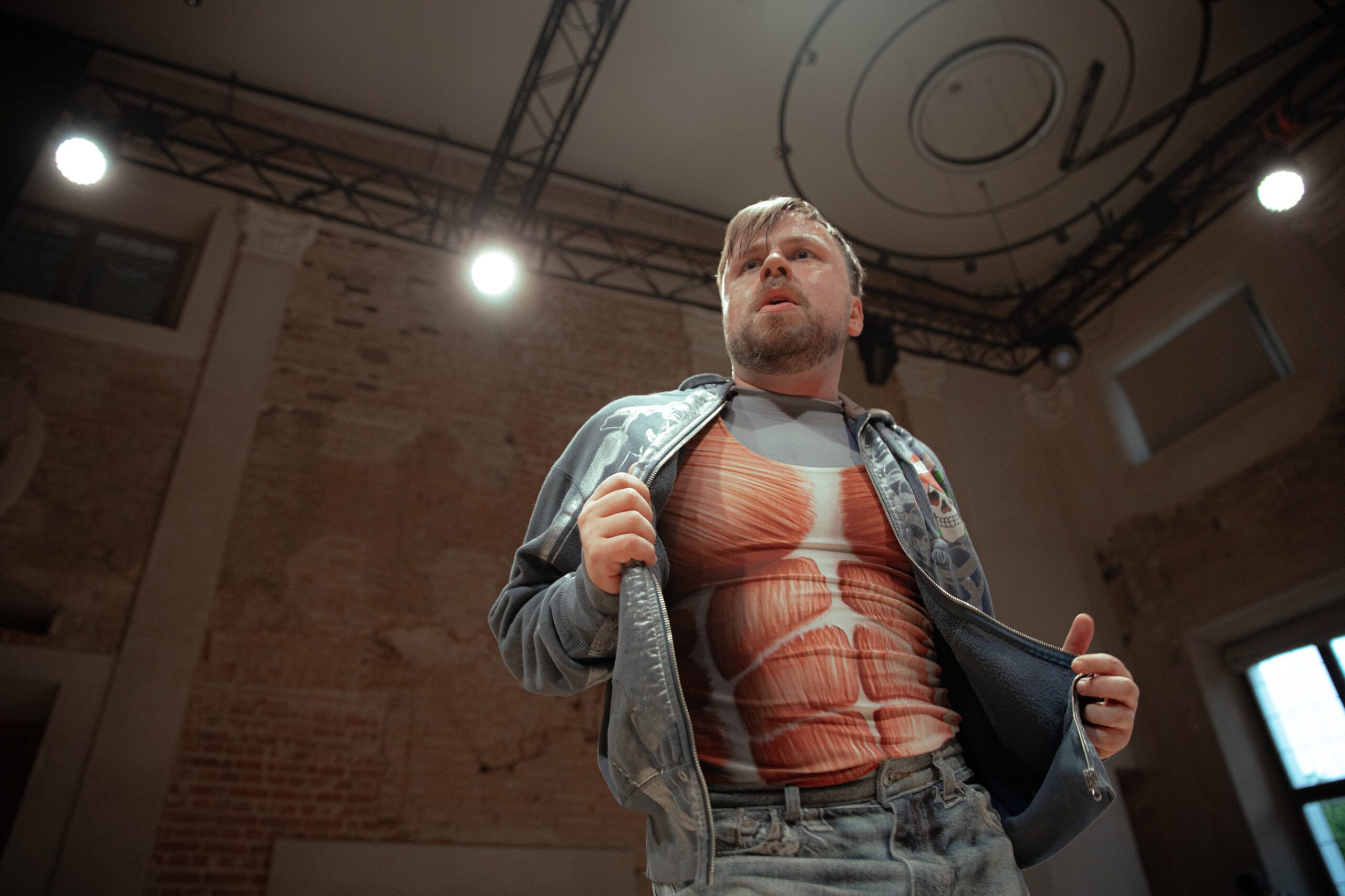
D: How do you see the relationship between control and abandonment, strength and exposure, unfolding in Storm?
P: I was interested in the dual nature of the hips, or more broadly, the core of the body. They act as a stabiliser for the entire skeleton on the one hand and allow for dynamic movement expression on the other. This is also why we have both bones and muscles in Elena Marija Veleckaitė’s cleverly designed costume. For me, looking for extreme positions where the hips are pushed out in different directions and pulled inwards again was quite a challenge. The slow rotation of the body, which emphasises the sculptural character of the movement, requires a lot of concentration and long training. On the other hand, I’m also interested in that revolutionary potential that lies in the hips: shaking and spinning, they can signify change and shift unpredictably. In Storm, I also work — as in most of my performances — with the figure of rotation. The swaying hips, while rotating, create a great centrifugal force that can throw the dancer out of rhythm and upright. This element of chaos and dislocation of the image also interests me.
D: The work is noted for its calculated precision and sculptural tension. Can you describe your choreographic process for developing these qualities in Storm?
P: I have been interested for some time in how tension and relaxation of the body can be used alternately. The sculptural nature of this performance is based on tensing the body, holding this state a little too long, and letting go, spilling over and blurring. Again, this is a nod to my rather varied dance education — I think I spent just as much time looking at myself in the mirror, practising the basic rumba step, as I did relaxing my muscles and “throwing out the bones” during release technique classes at my university. The theme of precision and tension is also closely linked to my relation with music composed by Agnė Matulevičiūtė. The soundscape is very rich — at times dynamic and energetic, at other times slowed down and stretched out, as if you were hearing the soundtrack of a film from a hundred years ago. When performing, I give myself a series of tasks that involve indulging in the atmosphere of the music and, at other times, working against it, anticipating the phonic events, as it were, or echoing.
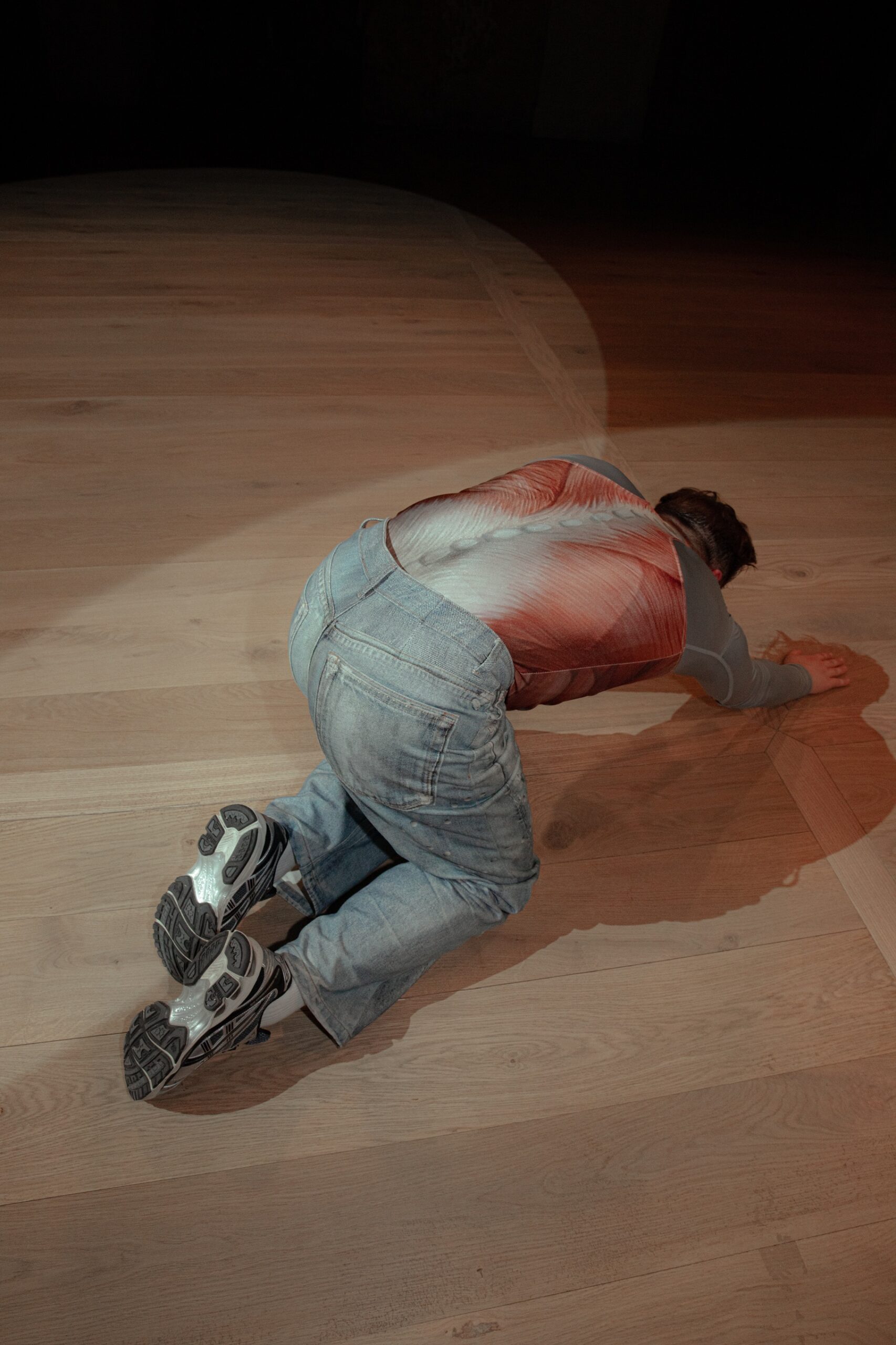
D: How did your engagement with physical memory and self-reflection shape the movement vocabulary of the piece?
P: When I realised I wanted to work with my hips, I tapped into my body memory first. I recalled all the figures and movement sequences that I had practised for years. I slowed them down, looped them, and moved them from standing to the floor. I practised in front of the mirror for a long time, which is not typical of my usual rehearsal process. I danced in place, then looked for ways to let the movement of my hips travel around the room. I rotated quickly, pushing my hips out in different directions, often losing my balance. I wondered what attracts me to other people’s hips when observing them in a club or on the street. As I usually do, I generated far too much movement material, which I then consistently removed and later set.
D: What role does light design and the performance space play in shaping the atmosphere of Storm? Palazzo Contarini Polignac is a splendid example of the early Renaissance transitional style, melding Gothic, Byzantine, and Tuscan motifs — it embodies the whole epoch, as a performer of the era in the city. It seems to be a perfect space for framing your performance.
P: I’m really excited about the performance at the Palazzo Contarini Polignac in Venice, which is only the second public presentation of Storm. The interior of the Renaissance palazzo is the perfect backdrop for a dance that looks back to the past and, in my opinion, is very nostalgic. I am particularly curious to see how this work will resonate in the context of the event organised by Arts Territory: Memories of Water, Memories of Air. My choreography is fluid and ever-changing; the movement of my hips constantly transforms, flowing up and down. The original lights, designed by Julius Kuršys, are reminiscent of old-style spotlights and blend daylight with artificial light, still simulating the light from behind the window. This work is flexible; it can be shown in different, not necessarily historical, spaces. I will be developing it in Warsaw early next year: the Polish premiere of Storm will take place in the newly created and long-awaited Pavilion of Dance, a new branch of the Museum of Modern Art in Warsaw. So, the spaces are and will be different, but I will definitely keep the gallery staging, with an audience all around. By doing so, my task will be to activate the whole room and the different stories written in my body.
D: Your previous works often engage with dance history and issues of cultural appropriation. Does Storm continue this line of inquiry, or does it mark a departure? If so, how?
P: Indeed, dance itself is one of the main themes in my work. Storm again draws on the history of dance, particularly my personal one. Hip work, whether from my time focusing on the Latin American Dancesport or my later education in the spirit of contemporary dance, is a core of exploration here. In a sense, I queer the familiar images from old cinema, the constantly twisting sculptures, and the campy aesthetic of Dancesport itself.
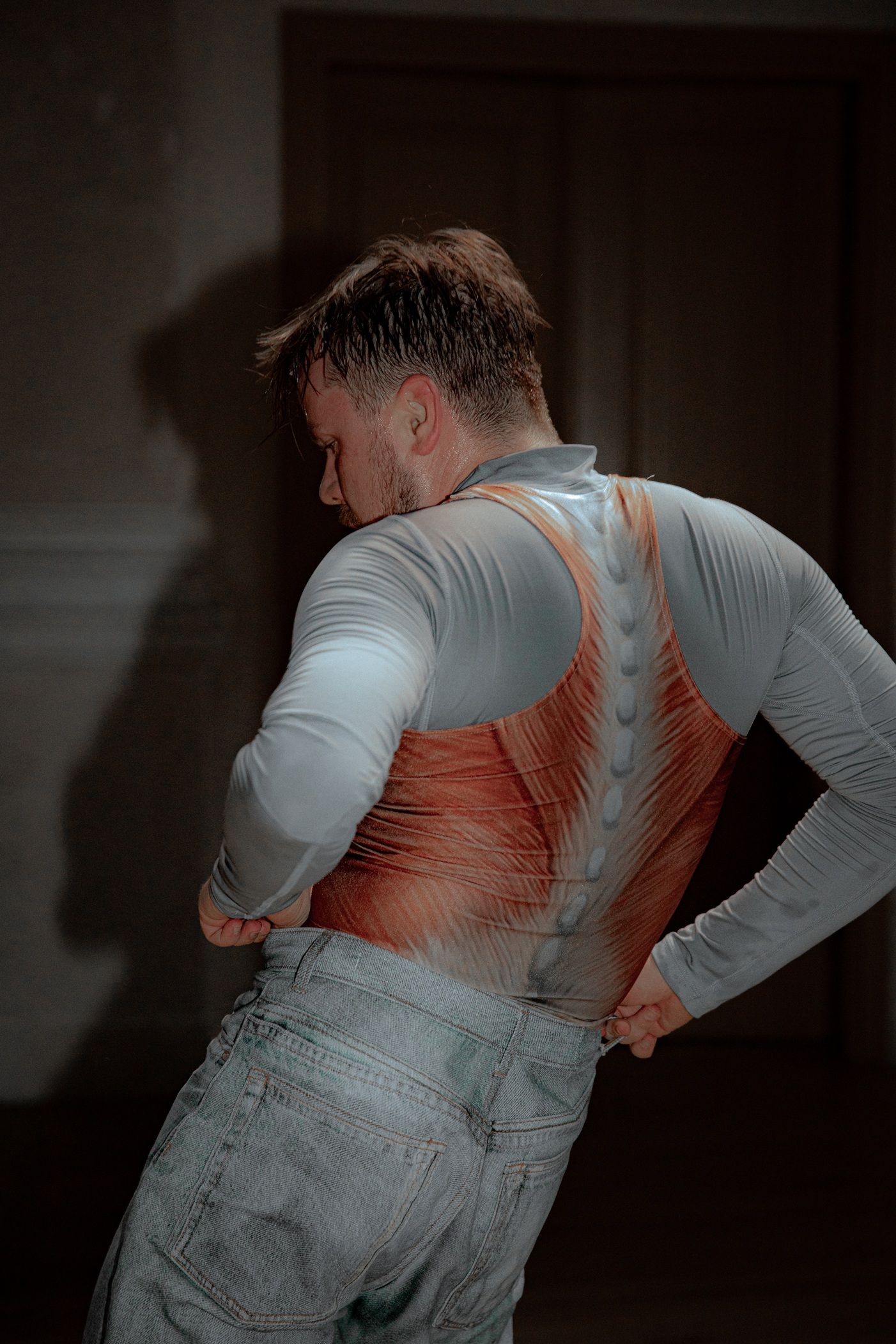
D: After performing Storm in different venues and contexts, have your perceptions or interpretations of the work changed?
P: Storm is a brand-new work that, after Venice, returns to Vilnius and Warsaw, and will be shown at various venues in Europe next year. I am curious to see how it will be received in the context of my previous solo works. Storm, although not as intense as Jumpcore — probably my most popular performance about jumping — in terms of choreographic material, is undoubtedly the most personal work. I’m also wondering how the themes of seduction — which I’ve explored on other bodies in my previous larger theatre works — will be analysed while performed by myself.
D: In the current time of oversaturation with still and moving images, what do you think about the political agency of performance and the politics of spectatorship?
P: I believe that today, a performance that allows things to last and transform can defend itself. Paradoxically, living in a world saturated with images and their rapid editing, live performance experienced by the viewer in proximity can offer some sense of relief. In this work, I also make use of looping and reprocessing motifs that appeared five or 15 minutes earlier. This allows the eye to sharpen and notice details, to see a new shape of a theoretically already known thing.
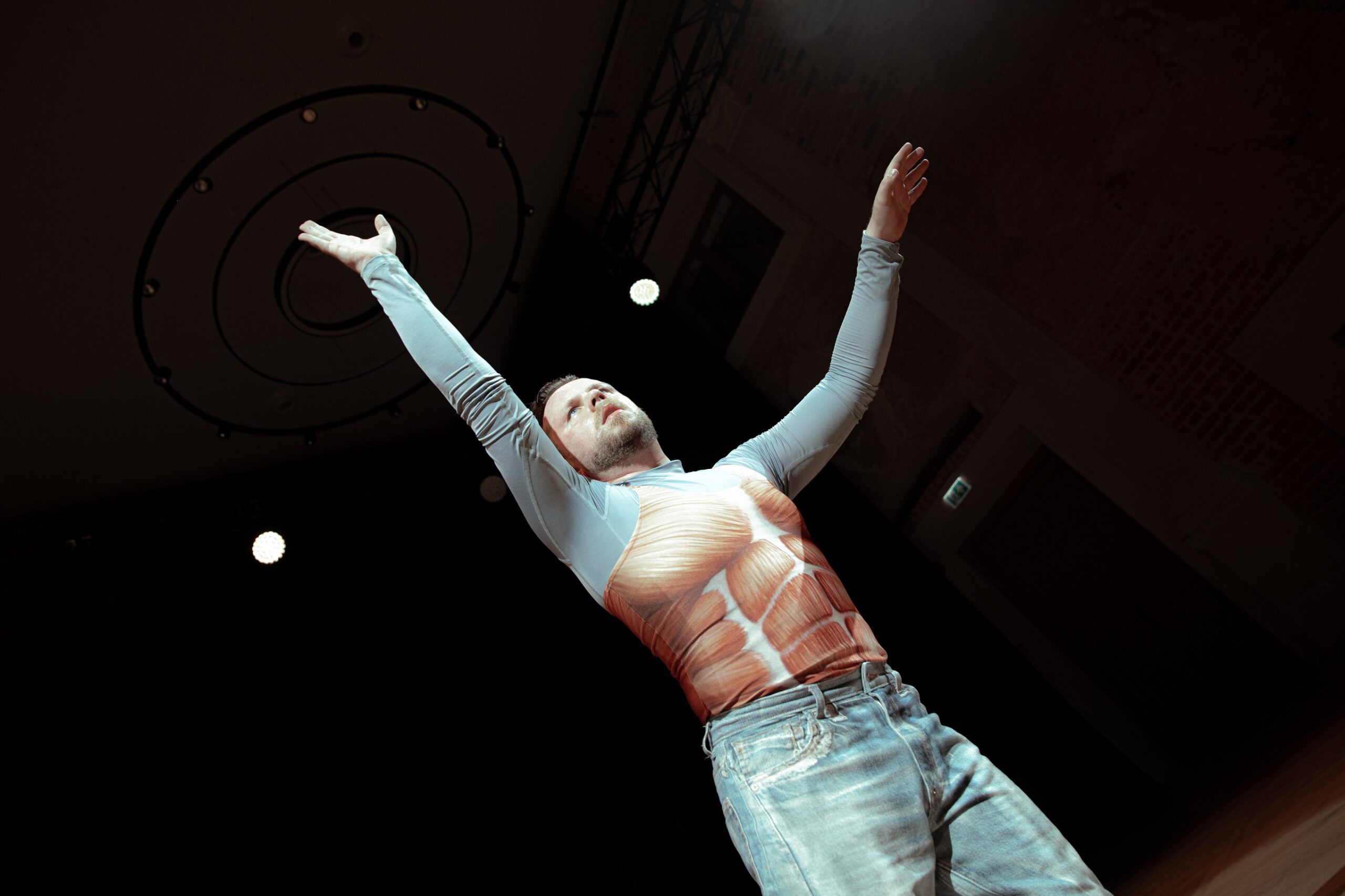
About:
Paweł Sakowicz is a choreographer and dancer. He is particularly interested in the history of dance and issues of cultural appropriation in choreography. Paweł’s works include: Jumpcore (Zachęta – National Gallery of Art), Masakra (Nowy Teatr in Warsaw), Amando (National Museum in Warsaw), Vortex (Theatre Institute in Warsaw), Imperial (Komuna Warszawa Theatre), Fatamorgana (Studio Hrdinu in Prague), Boa (National Old Theatre in Kraków) and Laguna (TR Warszawa). He has shown his work at, among others, three editions of the Polish Dance Platform, the Divine Comedy Festival, Santarcangelo Festival, Zürcher Theater Spektakel, Sirenos Festival, Warsaw Gallery Weekend, La Biennale de danse du Val-de-Marne, Muzeum Susch, Kunsthaus Hamburg, Tramway Glasgow, CAC New Orleans, NYU Skirball and Bohemian National Hall in New York City. He regularly collaborates with Anka Herbut, Anna Smolar and Łukasz Twarkowski.
Denis Maksimov is a curator, critic and educator. He is a Curator of Art and Programmes at Pushkin House, London, a Lecturer at the Institute of Contemporary Art, Moscow, and a Founder of the Lecture Performance Archive and Avenir Institute, Athens. He writes about art, politics and culture at large; his writing has been published in MoMA’s Notes on Art in a Global Context, Ocula, Obieg, Conceptual Fine Arts, Doppiozero International, Moscow Art Magazine, Arts of the Working Class, A*Desk, and other outlets. Edward Elgar Publishing will publish his latest book contribution in Art, Heritage and Performative Politics in late 2025. His writing has been translated into more than a dozen languages.

Project Storm by Paweł Sakowicz is part of Memories of Water, Memories of Air programme
27-28 June 2025
Palazzo Contarini Polignac in Venice,
Organised by: Ditto Foundation, Arts Territory,
Supported by: Palazzo Contarini Polignac, Voelkel Foundation, Polish Institute in Rome.
This project is co-financed by the Minister of Culture and National Heritage of the Republic of Poland from the Culture Promotion Fund. Cultural event of the Polish presidency of the Council of the EU.
Full credits for images:
Photography: Vismante Ruzgaite
Choreography and performance: Paweł Sakowicz,
Music: Agnė Matulevičiūtė,
Light design: Julius Kuršys,
Costume: Elena Marija Veleckaitė,
Production: Sapieha Palace, Vilnius,
Co-production: Pavilion of Dance, Warsaw,
Partner: Polish Institute in Vilnius;
Sapieha Palace produces the performance and is a part of the “Breaking the Joints” exhibition. Co-organised by the Adam Mickiewicz Institute as part of the international cultural program of the Polish Presidency of the Council of the European Union 2025.



